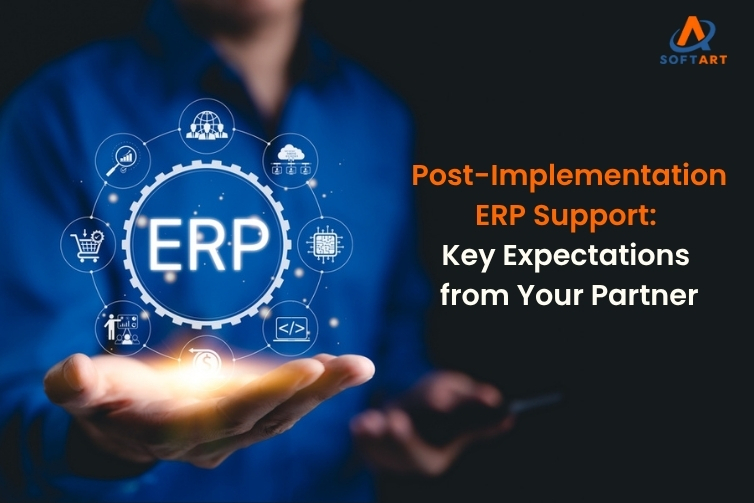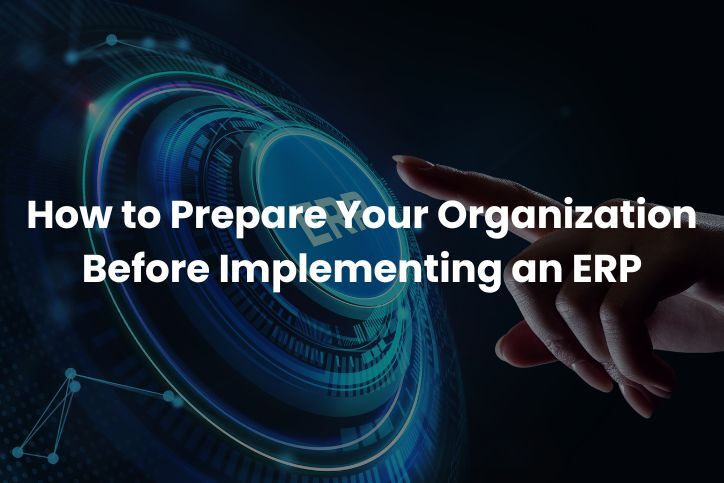The success or failure of your company transformation largely depends on selecting the most suitable ERP system. With an abundance of alternatives present in the market, getting lost in features, prices, and integration difficulties is common. Wrong pickings of software may drag you into a loop of spending too much time and money but achieving no returns. This manual will acquaint you with various types of ERP systems and their functionalities to meet different requirements, and provide you with some actionable steps to help you how to choose the best ERP system for your business progression and productivity.
The Core Problem: Why Businesses Struggle with ERP Systems
Many mid to large-scale companies face ERP challenges at some point. Whether the company is dependent on old legacy systems or has undergone a failed oracle erp implementation. For instance, a manufacturing company may lose its production effectiveness because of the lack of communication between its different systems or a retail chain may find that there are discrepancies in its inventory due to poor data management.
Common challenges businesses face include:
- Fragmented data across departments
- Poor reporting and forecasting
- Lack of scalability as operations grow
- Misalignment between software and business processes
- Implementation delays and cost overruns
Choosing an appropriate ERP system is a big decision as it not only changes the workings of your company but also facilitates better decision making, lessens the risks of the company and increases the profits. A lot of companies wrongly purchase their ERP without knowing what they really need or without consulting a trusted oracle ERP Implementation Partner in USA.
Types of ERP Systems: What’s Available and When to Use Them
Understanding the types of ERP systems available in the market can guide you toward choosing the best option for your unique challenges.
On-Premise ERP Systems: Control at Your Fingertips
An on-premise ERP system is installed on your company’s servers. These kinds of systems provide more options for security of data, adaptability and meeting of standards. They fit perfectly for companies with tough regulations or highly confidential data which they want to keep under their direct control.
Benefits:
- Full customization to meet specific business needs
- Better control over infrastructure and data security
- One-time investment with lower long-term costs
Challenges:
- Requires upfront capital for hardware and licenses
- Maintenance and upgrades are your responsibility
- May need in-house IT teams to manage the system
This model would be a good fit for your business if you are in areas such as health care, finance or the public sector where the security of data is of utmost importance.
Cloud ERP Systems: Flexibility and Scalability for Growing Businesses
These are suitable for businesses that want quick deployment, lower upfront costs and automatic updates. They are particularly helpful when deciding how to choose the best ERP system for your business that supports remote teams or rapid growth.
Benefits:
- Minimal upfront investment
- Scales easily with growing operations
- Frequent updates and new features without downtime
Challenges:
- Dependent on internet connectivity
- Potential data privacy concerns depending on the provider
- May require additional integration tools
They can also be great for organizations with remote workers or rapid growth situations, where access to data and processes need to be quick and smooth.
Hybrid ERP Systems: The Best of Both Worlds
Organizations undergoing digital transformation or operating in sectors with mixed compliance requirements find this model most practical when comparing types of ERP systems for scalability and security.
Benefits:
- Balance between control and scalability
- Enables gradual cloud adoption
- Allows critical operations to remain on-site while less sensitive functions migrate to the cloud
Challenges:
- Complex integration between systems
- Higher cost than pure cloud or on-premise models
Organizations undergoing digital transformation or operating in sectors with mixed compliance requirements find this model most practical.
Industry-Specific ERP Systems: Tailored for Unique Needs
Some ERP solutions are designed specifically for sectors like manufacturing, retail, distribution or professional services. These systems come with built-in workflows, compliance tools and reporting features that align with industry demands.
Benefits:
- Pre-configured processes reduce setup time
- Better analytics tailored to industry metrics
- Enhanced user adoption due to familiar workflows
Challenges:
- Less flexible when expanding into new industries
- Limited customization beyond sector-specific features
Industry-specific solutions are ideal for businesses seeking faster deployment without extensive customization.
How to Choose the Best ERP System for Your Business
Selecting the right ERP requires a structured approach. Here’s a proven framework to guide your decision-making process and help you how to choose the best ERP system for your business in a strategic way.
1. Assess Your Current Challenges
Draw a mapping of the inefficiencies, bottlenecks and operational voids in the business. Figure out those broken processes and the results you expect to get.
2. Define Business Goals and Priorities
Get more clarity on what the organization needs like better reporting, scalability or compliance with regulations. Put them in a hierarchy of importance that will help you pick the right solution.
3. Evaluate Deployment Models
By considering your safety needs, growth plans and current budget, decide between the use of cloud, on-premise or hybrid solutions.
4. Compare ERP Providers and Features
Look beyond marketing. Review case studies, client testimonials and product roadmaps. Pay attention to integration capabilities and vendor support. Consider consulting a trusted oracle ERP Implementation Partner in USA to ensure the selection fits your operational needs.
5. Plan for Implementation and Change Management
For the success of ERP, the implementation of only software is not enough. Creating the right team, establishing achievable timelines and scheduling training sessions for employees to get familiar with the system will definitely help a smooth adoption.
This model makes the decision easier and allows you to be sure that your ERP spending is in line with the business goals that last for a long time.
Comparing Top ERP Solutions in the Market
With so many ERP options available, it’s important to compare features, benefits and suitability to find the right solution for your business needs.
| ERP Type | Best For | Pros | Cons |
|---|---|---|---|
| Oracle ERP | Enterprise-scale businesses | Comprehensive modules, global compliance | Expensive, complex |
| NetSuite ERP | Fast-growing mid-sized firms | Cloud-first, scalable, flexible | Customization limits |
| Microsoft Dynamics 365 | Businesses seeking modular growth | Integration with Microsoft tools, AI capabilities | Requires careful planning |
The decision of selecting one among them really relies on the structure of your company, the available budget and the change objectives. Take for example Oracle ERP implementation is the best solution for multinational companies with complicated needs but on the other hand, NetSuite is the best fit for the companies that are rapidly expanding and require fast deployment.
Cost, Time and ROI Considerations
Knowing the expense, duration and the possible gain on investment is instrumental for companies to create better plans and to be able to make wise choices before buying an ERP system.
Typical Implementation Costs:
- On-premise ERP: $150,000 to $1 million depending on complexity
- Cloud ERP: $50,000 to $500,000 annually depending on users and modules
- Hybrid: Starting at $100,000, with ongoing cloud service fees
Implementation Timeframes:
- Small to mid-sized businesses: 6 to 12 months
- Large enterprises: 12 to 24 months
Expected ROI:
- Within the initial 12 months, there has been an operational efficiency improvement from 20% to 50%
- Maintenance and IT overhead have been reduced by up to 30% with cloud deployments
- Decision-making has been improved with the provision of real-time analytics
Choose the ERP Solution That Drives Growth!
Making the right choice in ERP software is essential for improving efficiency, reducing risks, and driving growth. By understanding the types of ERP systems and learning how to choose the best ERP system for your business, you set the foundation for a seamless digital transformation. Partnering with SoftArt, an experienced Oracle ERP Implementation Partner in USA can further enhance your ERP journey, ensuring your organization benefits from a robust and scalable solution.
Frequently Asked Questions:
- What is an ERP system?
Ans. An ERP system is basically software that allows companies to have a complete overview of the processes going on inside the business such as the finance department, sales department, inventory and HR. The major benefit is that these departments no longer need separate tools since they are all integrated.
- How do I know which ERP is right for my business?
Ans. Firstly, determine the size, the range and then the goal of your company. Next, think about whether you want to use a cloud, on-premise or hybrid ERP and then decide whether or not it is suitable for your type of business.
- Can ERP systems work with our existing software?
Ans. Certainly! The majority of contemporary ERP systems are designed with the ability to link up with the tools that you currently have in place. But doing a thorough check for integration options before making a purchase is crucial.
- How long does it take to implement an ERP system?
Ans. It is more or less dependent on the size of the business. For SMEs, it could take 6–12 months but for big corporations it could be 12–24 months.
- Will ERP improve my business efficiency?
Ans. Absolutely, the implementation of a quality ERP system is one of those situations where everybody benefits. The organization will be able to simplify the business processes, lower the chances for errors and get access to the latest figures, thus saving both time and money.







